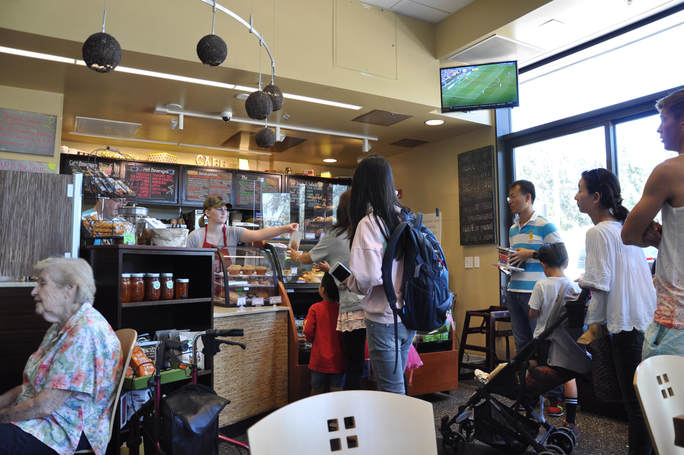At our cafe, customers come first. Since the day we set up shop, we have always kept our customers as our top priority, and have taken note of the best practices to keep them happy. Happy customers have a direct effect on our ability to hire and train adults with disabilities.
To explore Ada’s unique customer experience, we started asking ourselves questions like "Are customers at Ada’s happy?" "Do they support our mission?" "Do they like our coffee?".
Personal experiences, feedback and observation of the customers led to a general idea about customer satisfaction within the team. By tracking the feedback and experiences over the last two years, we knew for instance, that customers loved the 'Wonderful Wendy Sandwich', that they enjoyed our outdoor seating and that sometimes speed of service was an issue.
But, we wanted to go a step further. How could we better understand what was working and what was not?
To investigate customer experiences/satisfaction, we conducted a series of in-depth interviews with our customers. Our interviewee demographic ranged from high school students to senior citizens who have been Palo Alto residents for over 50 years. Our interviewees had diverse backgrounds and hailed from over 5 different countries.
We asked our interviewees several questions about their experiences, memorable moments, criticisms and suggestions for the cafe.
Here are some of our biggest learnings:
1. Business first
Our biggest learning was that to our customers, we were a business first. Our customers expect us to maintain our food and service quality, independent of our mission. The speed of service, consistency in the food, positive interactions with our employees, along with appreciation of the company’s mission are what our customers rated as the most important reasons to keep coming back to Ada’s.
2. Comfortable with Diversity
The majority of our interviewees indicated that they were extremely comfortable being served by employees with disabilities. For those familiar with Ada’s, the opportunity to interact with the employees was welcome and had positive feelings attached to it. There were also a few customers, who reported having no idea that the majority of our cafe employees had any type of disability. Despite their lack of knowledge, their assessment of Ada’s and the employees was still positive.
3. Emphasize with the mission
We were surprised to find that many customers, though dimly aware that some employees at Ada’s had developmental disabilities, did not know that one of Ada’s missions was to hire and empower people with disabilities. The takeaway therefore was the need to better communicate this mission to our customers, within the cafe and through the website. Spreading the word about how Ada’s came to be and what it stands for is an important way to build a community around us, enhance our customer relationships, and strengthen customer loyalty.
This study indicated that customer experience is directly tied to our performance as a food service business, that our employees help improve the quality of interaction in the cafe and that our customers will view our establishment more positively if they are aware of our mission.
These takeaways resulted in our decision to have more visual communication about our mission, increase the ways in which our employees interact with the customers and plan on introducing mission oriented customer engagement strategies.

